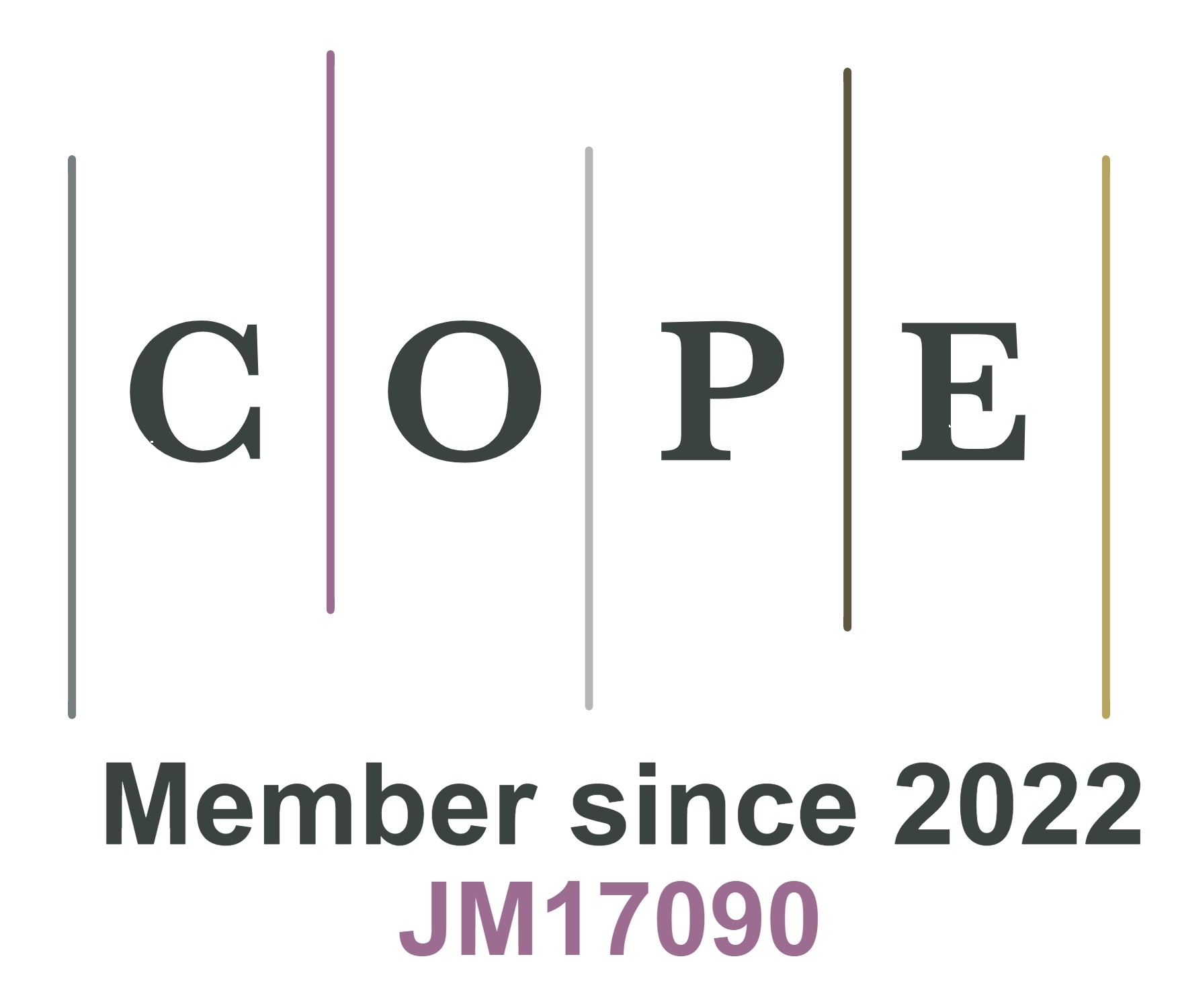REFERENCES
1. Kim DH, Ahn JH, Choi WM, et al. Stretchable and foldable silicon integrated circuits. Science 2008;320:507-11.
2. Cho KW, Sunwoo SH, Hong YJ, et al. Soft bioelectronics based on nanomaterials. Chem Rev 2022;122:5068-143.
3. Boutry CM, Negre M, Jorda M, et al. A hierarchically patterned, bioinspired e-skin able to detect the direction of applied pressure for robotics. Sci Robot 2018;3:eaau6914.
4. Liu Y, Norton JJ, Qazi R, et al. Epidermal mechano-acoustic sensing electronics for cardiovascular diagnostics and human-machine interfaces. Sci Adv 2016;2:e1601185.
5. Chun KS, Kang YJ, Lee JY, et al. A skin-conformable wireless sensor to objectively quantify symptoms of pruritus. Sci Adv 2021:7.
6. Kim J, Lee M, Shim HJ, et al. Stretchable silicon nanoribbon electronics for skin prosthesis. Nat Commun 2014;5:5747.
7. Kim SH, Baek GW, Yoon J, et al. A bioinspired stretchable sensory-neuromorphic system. Adv Mater 2021;33:e2104690.
8. Seo H, Han SI, Song KI, et al. Durable and fatigue-resistant soft peripheral neuroprosthetics for in vivo bidirectional signaling. Adv Mater 2021;33:e2007346.
9. Lim S, Son D, Kim J, et al. Transparent and stretchable interactive human machine interface based on patterned graphene heterostructures. Adv Funct Mater 2015;25:375-83.
10. Jung YH, Yoo J, Vázquez-guardado A, et al. A wireless haptic interface for programmable patterns of touch across large areas of the skin. Nat Electron 2022;5:374-85.
11. Song KI, Seo H, Seong D, et al. Adaptive self-healing electronic epineurium for chronic bidirectional neural interfaces. Nat Commun 2020;11:4195.
12. Choi S, Han SI, Jung D, et al. Highly conductive, stretchable and biocompatible Ag-Au core-sheath nanowire composite for wearable and implantable bioelectronics. Nat Nanotechnol 2018;13:1048-56.
13. Minev IR, Musienko P, Hirsch A, et al. Biomaterials. Electronic dura mater for long-term multimodal neural interfaces. Science 2015;347:159-63.
14. Kim DH, Viventi J, Amsden JJ, et al. Dissolvable films of silk fibroin for ultrathin conformal bio-integrated electronics. Nat Mater 2010;9:511-7.
15. Tian L, Zimmerman B, Akhtar A, et al. Large-area MRI-compatible epidermal electronic interfaces for prosthetic control and cognitive monitoring. Nat Biomed Eng 2019;3:194-205.
16. Rathi S, Deckert M, Brinkhues S, et al. PEDOT:PSS as a transparent electrically conducting polymer for brain stimulation electrodes. In: 2019 IEEE 16th India Council International Conference (INDICON).2019. p. 1-4.
17. Wang Y, Zhu C, Pfattner R, et al. A highly stretchable, transparent, and conductive polymer. Sci Adv 2017;3:e1602076.
19. Feig VR, Tran H, Lee M, Bao Z. Mechanically tunable conductive interpenetrating network hydrogels that mimic the elastic moduli of biological tissue. Nat Commun 2018;9:2740.
20. Feig VR, Tran H, Lee M, et al. An electrochemical gelation method for patterning conductive PEDOT:PSS hydrogels. Adv Mater 2019;31:e1902869.
21. Palumbiny CM, Liu F, Russell TP, Hexemer A, Wang C, Müller-Buschbaum P. The crystallization of PEDOT:PSS polymeric electrodes probed in situ during printing. Adv Mater 2015;27:3391-7.
22. Jiang Y, Zhang Z, Wang YX, et al. Topological supramolecular network enabled high-conductivity, stretchable organic bioelectronics. Science 2022;375:1411-7.
24. Jo YJ, Kim SY, Hyun JH, et al. Fibrillary gelation and dedoping of PEDOT:PSS fibers for interdigitated organic electrochemical transistors and circuits. npj Flex Electron 2022:6.
25. Lu L, Fu X, Liew Y, et al. Soft and MRI compatible neural electrodes from carbon nanotube fibers. Nano Lett 2019;19:1577-86.
26. Chen G, Dodson B, Johnson F, et al. Tissue-susceptibility matched carbon nanotube electrodes for magnetic resonance imaging. J Magn Reson 2018;295:72-9.
27. Ye F, Li M, Ke D, Wang L, Lu Y. Ultrafast Self‐healing and injectable conductive hydrogel for strain and pressure sensors. Adv Mater Technol 2019;4:1900346.
28. Tringides CM, Vachicouras N, de Lázaro I, et al. Viscoelastic surface electrode arrays to interface with viscoelastic tissues. Nat Nanotechnol 2021;16:1019-29.
29. Son D, Kang J, Vardoulis O, et al. An integrated self-healable electronic skin system fabricated via dynamic reconstruction of a nanostructured conducting network. Nat Nanotechnol 2018;13:1057-65.
30. Zhao S, Liu X, Xu Z, et al. Graphene encapsulated copper microwires as highly MRI compatible neural electrodes. Nano Lett 2016;16:7731-8.
31. Bakhshaee Babaroud N, Palmar M, Velea AI, et al. Multilayer CVD graphene electrodes using a transfer-free process for the next generation of optically transparent and MRI-compatible neural interfaces. Microsyst Nanoeng 2022;8:107.
32. Oribe S, Yoshida S, Kusama S, et al. Hydrogel-based organic subdural electrode with high conformability to brain surface. Sci Rep 2019;9:13379.
33. Fallegger F, Schiavone G, Pirondini E, et al. MRI-compatible and conformal electrocorticography grids for translational research. Adv Sci 2021;8:2003761.
34. Chen R, Canales A, Anikeeva P. Neural recording and modulation technologies. Nat Rev Mater 2017;2:16093.
36. Kim N, Kim J, Seo J, Hong C, Lee J. Stretchable inorganic LED displays with double-layer modular design for high fill factor. ACS Appl Mater Interfaces 2022;14:4344-51.
37. Jang KI, Chung HU, Xu S, et al. Soft network composite materials with deterministic and bio-inspired designs. Nat Commun 2015;6:6566.
38. Liu J, Zhang X, Liu Y, et al. Intrinsically stretchable electrode array enabled in vivo electrophysiological mapping of atrial fibrillation at cellular resolution. Proc Natl Acad Sci U S A 2020;117:14769-78.
40. Lee YY, Kang HY, Gwon SH, et al. A Strain-insensitive stretchable electronic conductor: PEDOT:PSS/acrylamide organogels. Adv Mater 2016;28:1636-43.
41. Yang Q, Wei T, Yin RT, et al. Photocurable bioresorbable adhesives as functional interfaces between flexible bioelectronic devices and soft biological tissues. Nat Mater 2021;20:1559-70.
42. Son D, Lee J, Qiao S, et al. Multifunctional wearable devices for diagnosis and therapy of movement disorders. Nat Nanotechnol 2014;9:397-404.
43. Ju J, Kim J, Choi Y, et al. Punicalagin-loaded alginate/chitosan-gallol hydrogels for efficient wound repair and hemostasis. Polymers 2022;14:3248.
44. Kim J, Ju J, Kim SD, Shin M. Plant-inspired Pluronic-gallol micelles with low critical micelle concentration, high colloidal stability, and protein affinity. Biomater Sci 2022;10:3739-46.
45. Shin M, Song KH, Burrell JC, Cullen DK, Burdick JA. Injectable and conductive granular hydrogels for 3D printing and electroactive tissue support. Adv Sci 2019;6:1901229.
46. Uman S, Dhand A, Burdick JA. Recent advances in shear‐thinning and self-healing hydrogels for biomedical applications. J Appl Polym Sci 2020;137:48668.
47. Jin S, Kim Y, Son D, Shin M. Tissue adhesive, conductive, and injectable cellulose hydrogel ink for on-skin direct writing of electronics. Gels 2022;8:336.
48. Shin M, Park E, Lee H. Plant-inspired pyrogallol-containing functional materials. Adv Funct Mater 2019;29:1903022.
49. Kim S, Choi H, Son D, Shin M. Conductive and adhesive granular alginate hydrogels for on-tissue writable bioelectronics. Gels 2023;9:167.
51. Dromel PC, Singh D, Andres E, et al. A bioinspired gelatin-hyaluronic acid-based hybrid interpenetrating network for the enhancement of retinal ganglion cells replacement therapy. NPJ Regen Med 2021;6:85.
52. Xing F, Zhou C, Hui D, et al. Hyaluronic acid as a bioactive component for bone tissue regeneration: Fabrication, modification, properties, and biological functions. Nanotechno Rev 2020;9:1059-79.
53. Kim S, Shin M. Role of free catecholamine in thiol-ene crosslinking for hyaluronic acid hydrogels with high loading efficiency of anticancer drugs. Tissue Eng Regen Med 2022;19:281-7.
54. Shin J, Choi S, Kim JH, et al. Tissue adhesives: tissue tapes-phenolic hyaluronic acid hydrogel patches for off-the-shelf therapy (Adv. Funct. Mater. 49/2019). Adv Funct Mater 2019;29:1970331.
55. Choi S, Lee JS, Shin J, et al. Osteoconductive hybrid hyaluronic acid hydrogel patch for effective bone formation. J Control Release 2020;327:571-83.
56. An S, Choi S, Min S, Cho S. Hyaluronic acid-based biomimetic hydrogels for tissue engineering and medical applications. Biotechnol Bioproc E 2021;26:503-16.
57. Kim KS, Park SJ, Yang JA, et al. Injectable hyaluronic acid-tyramine hydrogels for the treatment of rheumatoid arthritis. Acta Biomater 2011;7:666-74.
58. Kurisawa M, Chung JE, Yang YY, Gao SJ, Uyama H. Injectable biodegradable hydrogels composed of hyaluronic acid-tyramine conjugates for drug delivery and tissue engineering. Chem Commun 2005:4312-4.
59. Kim SD, Jin S, Kim S, Son D, Shin M. Tyramine-functionalized alginate-collagen hybrid hydrogel inks for 3D-bioprinting. Polymers 2022;14:3173.
60. Lee F, Chung JE, Kurisawa M. An injectable hyaluronic acid-tyramine hydrogel system for protein delivery. J Control Release 2009;134:186-93.
61. Wang LS, Lee F, Lim J, et al. Enzymatic conjugation of a bioactive peptide into an injectable hyaluronic acid-tyramine hydrogel system to promote the formation of functional vasculature. Acta Biomater 2014;10:2539-50.
62. Lee F, Chung JE, Kurisawa M. An injectable enzymatically crosslinked hyaluronic acid- hydrogel system with independent tuning of mechanical strength and gelation rate. Soft Matter 2008;4:880-7.
63. Shin J, Choi EJ, Cho JH, et al. Three-dimensional electroconductive hyaluronic acid hydrogels incorporated with carbon nanotubes and polypyrrole by catechol-mediated dispersion enhance neurogenesis of human neural stem cells. Biomacromolecules 2017;18:3060-72.
64. Kim S, Jang Y, Jang LK, et al. Electrochemical deposition of dopamine-hyaluronic acid conjugates for anti-biofouling bioelectrodes. J Mater Chem B 2017;5:4507-13.
65. Kim J, Kim S, Son D, Shin M. Phenol-hyaluronic acid conjugates: correlation of oxidative crosslinking pathway and adhesiveness. Polymers 2021;13:3130.
66. Kim SH, Kim Y, Choi H, et al. Mechanically and electrically durable, stretchable electronic textiles for robust wearable electronics. RSC Adv 2021;11:22327-33.
67. Song J, Kim Y, Kang K, Lee S, Shin M, Son D. Stretchable and Self-healable graphene-polymer conductive composite for wearable EMG sensor. Polymers 2022;14:3766.
68. Park K, Kang K, Kim J, et al. Balanced coexistence of reversible and irreversible covalent bonds in a conductive triple polymeric network enables stretchable hydrogels with high toughness and adhesiveness. ACS Appl Mater Interfaces 2022;14:56395-406.
69. Lee S, Park K, Kum J, et al. Stretchable surface electrode arrays using an alginate/PEDOT:PSS-based conductive hydrogel for conformal brain interfacing. Polymers 2022;15:84.
70. Park K, Choi H, Kang K, Shin M, Son D. Soft stretchable conductive carboxymethylcellulose hydrogels for wearable sensors. Gels 2022;8:92.
71. Kim Y, Song J, An S, Shin M, Son D. Soft liquid metal-based conducting composite with robust electrical durability for a wearable electrocardiogram sensor. Polymers 2022;14:3409.
72. Sun JY, Zhao X, Illeperuma WR, et al. Highly stretchable and tough hydrogels. Nature 2012;489:133-6.
73. Ju J, Jin S, Kim S, et al. Addressing the shortcomings of polyphenol-derived adhesives: achievement of long shelf life for effective hemostasis. ACS Appl Mater Interfaces 2022;14:25115-25.
74. Oliva N, Shin M, Burdick JA. Editorial: special issue on advanced biomedical hydrogels. ACS Biomater Sci Eng 2021;7:3993-6.
75. Choi Y, Kang K, Son D, Shin M. Molecular rationale for the design of instantaneous, strain-tolerant polymeric adhesive in a stretchable underwater human-machine interface. ACS Nano 2022;16:1368-80.
76. Nguyen LTB, Hsu CC, Ye H, Cui Z. Development of an in situ injectable hydrogel containing hyaluronic acid for neural regeneration. Biomed Mater 2020;15:055005.
77. Moraes MR, Alves AC, Toptan F, et al. Glycerol/PEDOT:PSS coated woven fabric as a flexible heating element on textiles. J Mater Chem C 2017;5:3807-22.
78. Koizumi Y, Ohira M, Watanabe T, Nishiyama H, Tomita I, Inagi S. Synthesis of poly(3,4-ethylenedioxythiophene)-platinum and poly(3,4-ethylenedioxythiophene)-poly(styrenesulfonate) hybrid fibers by alternating current bipolar electropolymerization. Langmuir 2018;34:7598-603.
79. Liu X, Zai J, Iqbal A, et al. Glycerol-crosslinked PEDOT:PSS as bifunctional binder for Si anodes: Improved interfacial compatibility and conductivity. J Colloid Interface Sci 2020;565:270-7.
80. Kim J, Jang JG, Kwak J, Hong JI, Kim SH. Enhanced humid reliability of organic thermoelectrics via crosslinking with glycerol. Nanomaterials 2019;9:1591.
81. Choi Y, Park K, Choi H, Son D, Shin M. Self-healing, stretchable, biocompatible, and conductive alginate hydrogels through dynamic covalent bonds for implantable electronics. Polymers 2021;13:1133.
82. Wang Z, Chen L, Chen Y, Liu P, Duan H, Cheng P. 3D printed ultrastretchable, hyper-antifreezing conductive hydrogel for sensitive motion and electrophysiological signal monitoring. Research 2020;2020:1426078.
83. Aggas JR, Abasi S, Phipps JF, Podstawczyk DA, Guiseppi-Elie A. Microfabricated and 3-D printed electroconductive hydrogels of PEDOT:PSS and their application in bioelectronics. Biosens Bioelectron 2020;168:112568.
84. Hiendlmeier L, Zurita F, Vogel J, et al. 4D-Printed soft and stretchable self-folding cuff electrodes for small-nerve interfacing. Adv Mater 2023;35:e2210206.
85. Puza F, Lienkamp K. 3D printing of polymer hydrogels-from basic techniques to programmable actuation. Adv Funct Materials 2022;32:2205345.
86. Kim K, Choi JH, Shin M. Mechanical stabilization of alginate hydrogel fiber and 3D constructs by mussel-inspired catechol modification. Polymers 2021;13:892.
87. Jeong JW, Shin G, Park SI, Yu KJ, Xu L, Rogers JA. Soft materials in neuroengineering for hard problems in neuroscience. Neuron 2015;86:175-86.
88. Lacour SP, Courtine G, Guck J. Materials and technologies for soft implantable neuroprostheses. Nat Rev Mater 2016:1.
89. Kang J, Son D, Wang GN, et al. Tough and water-insensitive self-healing elastomer for robust electronic skin. Adv Mater 2018;30:e1706846.
90. Lim C, Hong YJ, Jung J, et al. Tissue-like skin-device interface for wearable bioelectronics by using ultrasoft, mass-permeable, and low-impedance hydrogels. Sci Adv 2021:7.
91. Liu Y, Liu J, Chen S, et al. Soft and elastic hydrogel-based microelectronics for localized low-voltage neuromodulation. Nat Biomed Eng 2019;3:58-68.
92. Shahini A, Yazdimamaghani M, Walker KJ, et al. 3D conductive nanocomposite scaffold for bone tissue engineering. Int J Nanomedicine 2014;9:167-81.
93. Ouyang L, Shaw CL, Kuo CC, Griffin AL, Martin DC. In vivo polymerization of poly(3,4-ethylenedioxythiophene) in the living rat hippocampus does not cause a significant loss of performance in a delayed alternation task. J Neural Eng 2014;11:026005.
94. Filho G, Júnior C, Spinelli B, Damasceno I, Fiuza F, Morya E. All-polymeric electrode based on PEDOT:PSS for in vivo neural recording. Biosensors 2022;12:853.
95. Feig VR, Tran H, Bao Z. Biodegradable polymeric materials in degradable electronic devices. ACS Cent Sci 2018;4:337-48.










